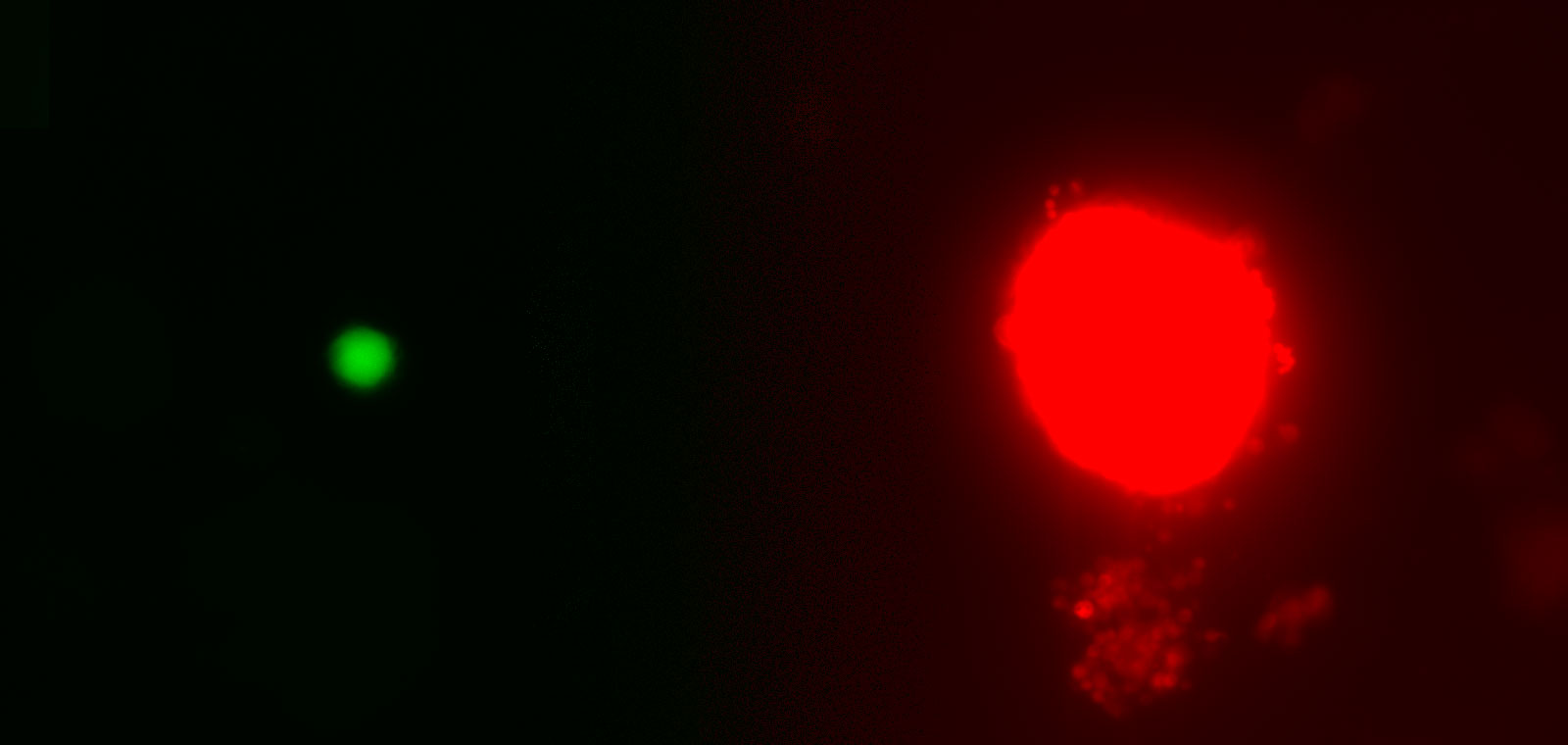
If you get malaria, it's a life sentence, people often say. There's a good reason for thinking so. In a certain type of malaria, the ‘dormant stage’ exists in the liver (‘Hypnozoites’), which wakes up after a certain period and then causes a new infection. Or at least that's what was thought...
No one had ever managed to observe the waking process. The reason simply was that it was necessary to kill the parasite in order to be able to stain it. This makes it impossible to follow the development of the parasite over time. But this has now changed!
Different colour due to DNA
At BPRC we have developed a technology for staining the parasite without killing it in the process. This is done by placing ‘a piece’ of DNA in the parasite, which colours green under a special microscope. As soon as the sleeping form ‘awakens’, it changes colour, so to speak. The parasite then appears as red.
How it really works
The coloured parasites (in liver cells) are put in a Petri dish which allows researchers to follow their development over time, for an extended period. During the first two weeks, the sleeping parasites remain small and are green. The other parasites continue to develop during this period, meaning that thousands of new parasites are created (which continue to develop in the blood). After two weeks, a tiny portion of the dormant stage ‘awakens’ and continues growing. This process has finally established that this is the way it indeed really works.
Using this technology, we can now try and find substances that can ‘wake’ the parasite. We currently only have limited options for doing anything about sleeping malaria parasites, yet once they start growing, various means are available. So if we are able to find a way to activate all of the parasites, we would be able to then kill them and thus prevent subsequent infections.
This research has been described in Communications Biology.

